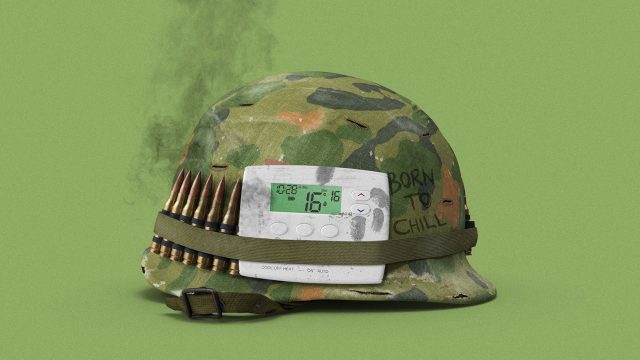
The days are getting colder but inside our homes the temperature is rising as the annual thermostat battles hot up.
A survey last year found that 53% of couples argue over the heating and that while eight in 10 women admitted to secretly turning up the thermostat, men were most likely to want a cooler house and to start a row over energy bills.
‘Stealth-adjusting’
There’s simply “no such thing as a couple who wants their house the same temperature”, said Zoe Williams in The Guardian. Instead, couples spend the colder months “stealth-adjusting the temperature until it gets stealth-adjusted back”.
The “beauty” of this scenario is “how many other conversations about compromise, lifestyle, mortality, domestic load and everything else” are “mediated through this very slow-burn conversation”. It’s conducted over a period that is “roughly what harvest time would have been to a pre-industrialised marital unit” – acting as a “release valve” of a “set of practical, crop-and-pig-based conflicts, for all the other tensions of the year”.
Yes, men are generally thought of as the ones who turn the thermostat down, but sometimes it’s the other way around, said Susannah Frieze in the Daily Mail, because “I slink around the house, unseen by my husband, turning down the dials on radiators”.
“I’m far tougher in the cold than my husband”, and while our son is “shivering like a whippet and complaining about the cold”, my daughter “wraps herself in a duvet if all else fails” and “given half a chance, she too will spin the dial down”.
‘Shakespearean bitterness’
The “split between those who reach for a jumper, rather than turning on a radiator, can be almost Shakespearean in its bitterness”, said Will Gore in The Independent, but this doesn’t mean it can’t be resolved.
For years, my wife and I would “both find the thermostat had been nudged a degree or two up, or down, depending on who was in the house”, but I’ve “mellowed”, and now, “when I see the thermostat has been turned up to 19 degrees, I (mostly) resist the temptation to twiddle it back to 16” because I “no longer regard radiators in October as an outrage”.
Still, the “central heating battle of sexes” have begun this year, said Nick Harding in The Telegraph, and this is “only to be expected” because there’s “plenty of scientific evidence to show that men and women react differently to temperature”.
A study published in The Lancet found that women’s hands can be significantly colder, at 28.2C on average, compared with 32.2C for men, and a 2025 review on Science Direct concluded that in cold environments women feel significantly colder than men, and have lower skin temperature, which points to “genuine physiological differences” between the sexes.
Women also have “less muscle, which is a natural heat producer”, more body fat, which can “block the flow of blood carrying heat to the skin and extremities” and as they are generally smaller than men, they have a “higher skin surface to volume ratio, causing them to lose heat more quickly through the skin”.
So stick to your guns “next time you find yourself arguing over the thermostat with your husband”, because “there is plenty of biological ammo to back up your position”.
‘Genuine physiological differences’ mean women and men are at odds over temperatures at home






